Ageratina herbacea, Fragrant Snakeroot
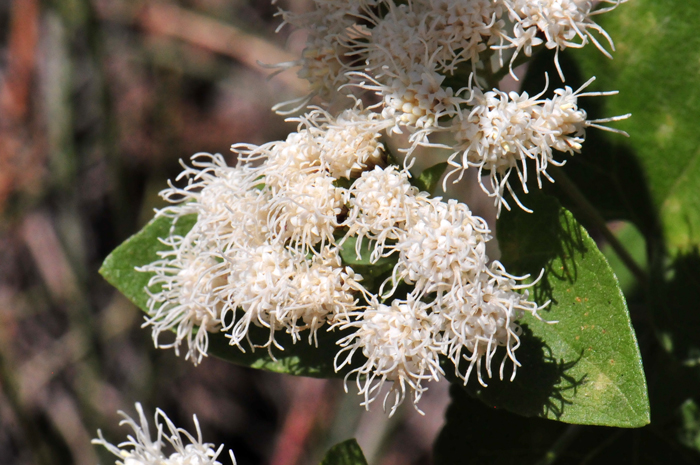
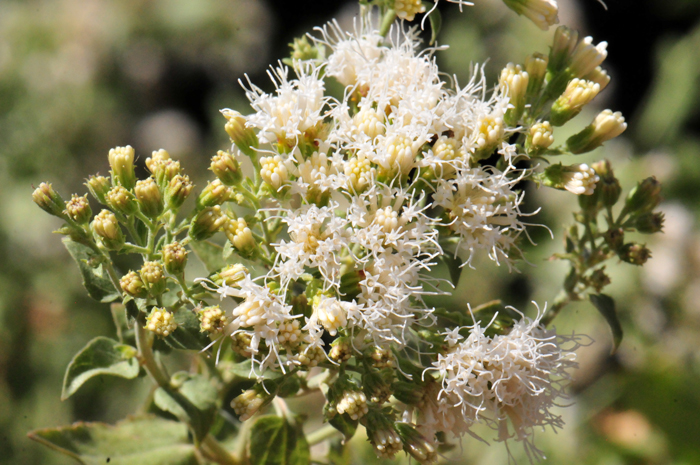
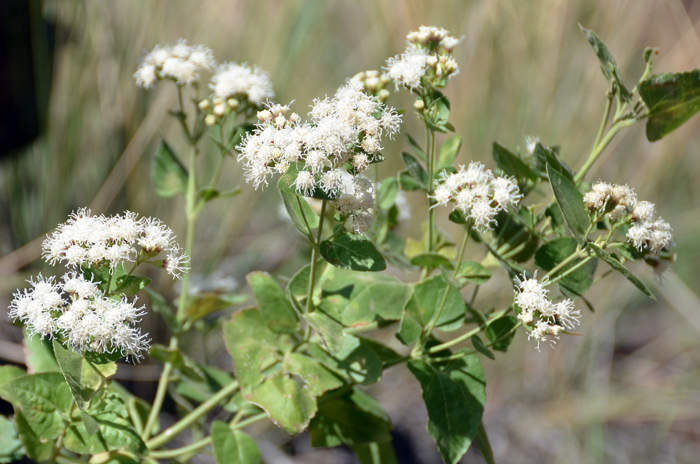
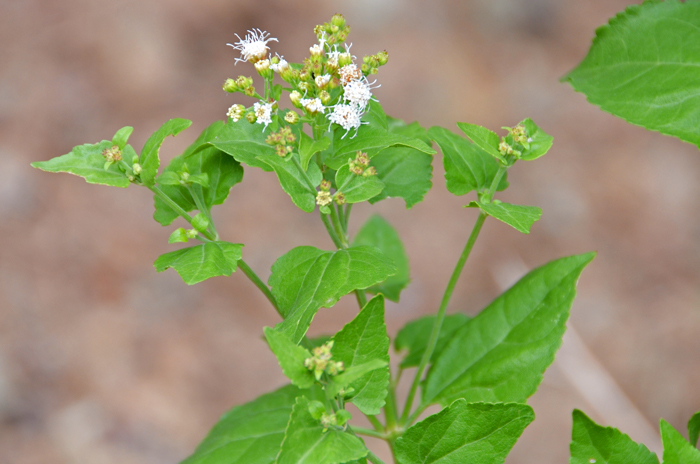
Scientific Name: Ageratina herbacea
Common Name: Fragrant Snakeroot
Also called: Apache Snakeroot, Herbaceous Joepieweed
Family: Asteraceae, Sunflower Family
Synonyms: (Ageratina betulaefolia, Eupatorium arizonicum, Eupatorium herbaceum, Eupatorium occidentale var. arizonicum, Kyrstenia betulifolia)
Status: Native
Duration: Perennial or subshrub from rhizomes.
Size: Up to 2 feet (60 cm) tall.
Growth Form: Forb/herb; subshrub, woody crowns; stems green; plants upright (erect); stems fuzzy, covered with small soft erect hairs; plants often brittle.
Leaves: Yellow-green or grayish, opposite; leaves with small stalks; leaf shape triangular or heart-shaped to broadly ovate; leaf edges (margins) toothed.
Flower Color: White, showy; fuzzy flowers in dense open clusters on short stalks; disk florets only; the fruit is a cypsela with a rough or bristly tan or brownish pappus.
Flowering Season: May, June or July to October or November
Elevation: 5,000 to 9,000 feet (1,524-2,743 m)
Habitat Preferences: Multiple habitat types, openings in pine forest communities, pine-oak, pinyon-juniper, rocky slopes, meadows, ridges, washes and rocks along streams.
Recorded Range: A southwestern species in the United States where it may be found in AZ, CA, CO, NM, NV, TX and UT. Also found in northern Mexico. Ageratina herbacea is most heavily represented in AZ and NM. In Arizona throughout much of state, absent in the southwest corner; south to Mexico, Chihuahua, Coahuila, Sonora and Baja California.
North America & US County Distribution Map for Ageratina herbacea.
North America species range map for Fragrant Snakeroot, Ageratina herbacea:
North American range map courtesy of Virginia Tech, Dept. of Forest Resources & Environmental Conservation
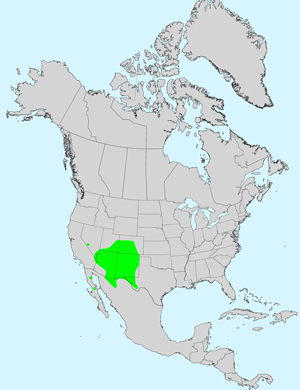
U.S. Weed Information: Unknown
Invasive/Noxious Weed Information: Unknown
Wetland Indicator: Unknown
Threatened/Endangered Information: Unknown
The genus Ageratina was published in 1841 by Edouard Spach.
In the Southwestern United States: Arizona has 5 species of Ageratina, California has 4 species, Nevada and Utah each have 2 species, New Mexico has 3 species and Texas has 5 species. Data approximate, subject to revision.
Comments: Fragrant Snakeroot is found in Arizona in forested areas and is fragrant as the name implies. It is not a desert species but might be encountered in transition areas. It superficially resembles Brickellbush plants (Brickellia). The plants above were photographed in late July near Mount Ord in Maricopa County, AZ, as they were just starting to bloom.
Fragrant Snakeroot has distinctive colored leaves which are usually yellow-green, sometimes grayish.
The genus Ageratina was published in 1841 by Edouard Spach.
The specific epithet, herbacea (herba'cea:) means herbaceous, not woody.
See full species account from Native American Ethnobotany, University of Michigan, Dearborn.

